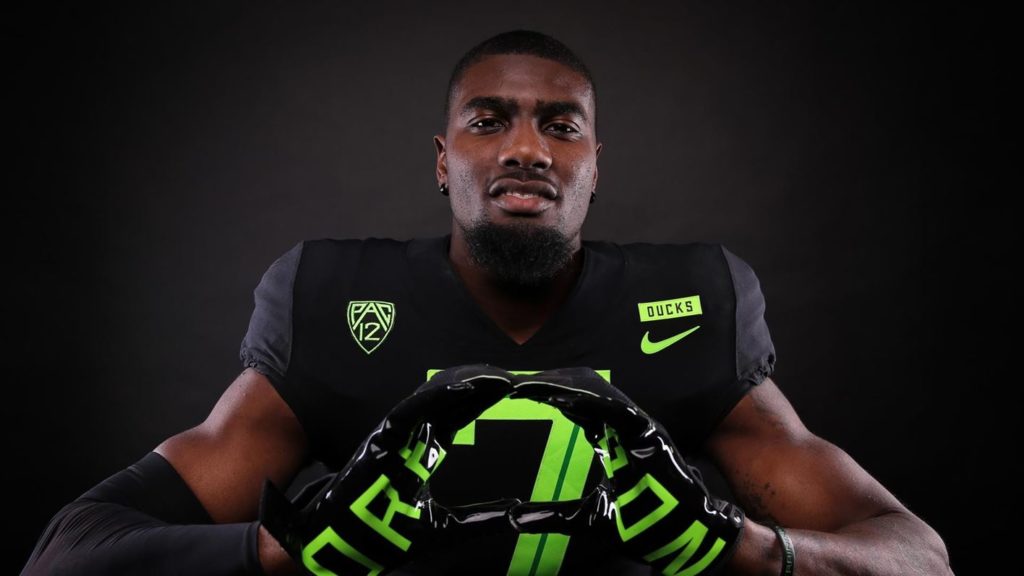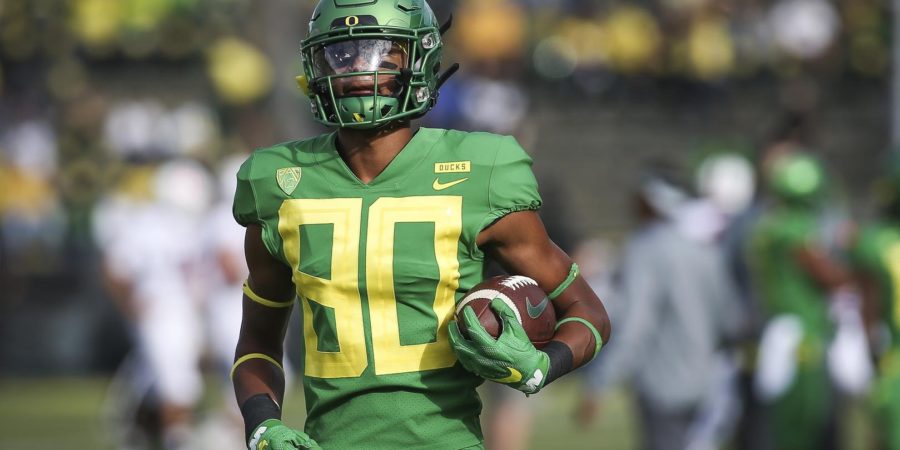In recent memory, has there been a Duck position group that has been more maligned over the course of an entire year than Oregon’s wide receivers were in 2018?
It certainly feels like there hasn’t, and that’s in spite of the fact that last season’s unit produced the best single-season receiving performance in school history thanks to Dillon Mitchell’s 75 catches for 1,184 yards and 10 touchdowns.
Mitchell is now gone, deciding to forego his senior season at Oregon to turn pro where he was a seventh round draft choice of the Minnesota Vikings this past April. The burden of replacing a receiver who accounted for more than 30 percent of the team’s receptions, more than 36 percent of its receiving yards, and more than 34 percent of its receiving touchdowns a season ago now falls to a high profile grad transfer (Juwan Johnson), a trio of largely unproven upperclassmen (Jaylon Redd, Brenden Schooler, and Johnny Johnson), and collection of talented true freshmen (Mycah Pittman, Josh Delgado, JR Waters, and Lance Wilhoite) who have yet to play a single snap of college football.

It will be incumbent on each member of these respective groups to provide contributions that help fill the tremendous void left by Mitchell’s departure. However, there’s a fourth contingent not yet mentioned that may ultimately hold the key to Oregon’s aerial success in 2019. In redshirt freshmen Bryan Addison, Isaah Crocker, and JJ Tucker, the Ducks boast three additional receivers who ooze potential, but are question marks in their own right due to their staggering lack of proven production.
This is particularly true of Addison and Crocker, who were widely considered to be the two top receivers signed by Oregon in the 2018 class. Unfortunately for the Ducks, neither player was able to provide much of an impact in game action to help alleviate pressure on Justin Herbert, Mitchell, and the rest of the Oregon passing attack.
In fact, only Addison saw game action in 2018, appearing in four contests and registering only one catch for 12 yards.
Formerly a four-star recruit who was ranked as the no. 3 athlete in the 2018 class per 247Sports’ Composite Rankings, Addison was a late summer addition to the program after he was unable to clear admissions at UCLA. Though, despite the hasty move from Los Angeles to Eugene, Addison quickly caught the eye of the Oregon coaching staff in fall practice and throughout the regular season, and was reportedly on the cusp of earning more playing time before an in-season team suspension stymied his progress.
Now, with a full year under his belt, it’s fair to expect Addison to emerge as one of Herbert’s top receiving targets in 2019, as he’s the only player on the Oregon roster (aside from Juwan Johnson) who combines serious size (6’5″, 192 lbs.) with serious athleticism.
Similarly, Crocker is also expected to deliver upon the big play reputation he garnered as one of the high school top prospects from the Sacramento area in the 2018 class.
Listed at 6-foot-1 and 176 pounds, Crocker doesn’t possess Addison’s uncommon size for the position, but he is a player who is more than capable of developing into the downfield receiving threat that this offense desperately needs post-Mitchell. Consistency, however, has been the one thing that has eluded Crocker since he stepped foot on campus last summer. Plays like this one have highlighted Crocker’s breakout potential, but a combination of nagging injuries and uneven play in practice settings has impeded his path to the field.
It’s true that even without Mitchell, experience and a greater depth of talent is on the side of Oregon’s receiver group entering the fall. But with a pecking order in the wide receiver room still to be determined, the emergence of Addison and Crocker could mean a world of difference between the way this group is viewed now and the end of November.

